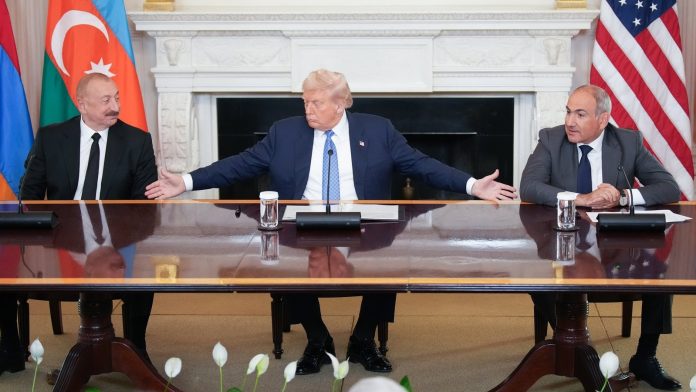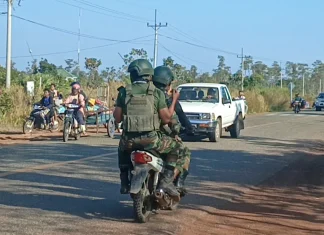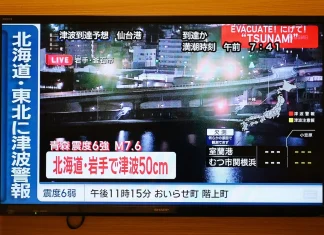
Bridging a Bitter Divide: A Historic Peace Moment in the South Caucasus
In a moment steeped with hope, tension, and the weight of decades, the White House recently played host to an extraordinary summit between two long-feuding neighbors: Armenia and Azerbaijan. For the first time in years, the leaders of these South Caucasus nations stood shoulder to shoulder, signing a declaration that promises to pivot away from a grim legacy of conflict toward a future of peace, commerce, and cooperation. The summit, championed and orchestrated under the watchful eye of then-US President Donald Trump, marks what many are calling a milestone—perhaps even the dawn of a new era in a region scarred by war.
A Long Shadow Cast by History
To truly appreciate the significance of this event, one must understand the complex, often tragic past that binds Armenia and Azerbaijan. Their friction is not merely a border dispute; it is a tapestry woven with identity, religion, and the jagged remnants of the Soviet Union’s dissolution. The Nakorno-Karabakh region—an ethnic Armenian enclave internationally recognized as part of Azerbaijan—has been the flashpoint for two full-scale wars, most recently a brutal 2023 conflict.
This war culminated with Azerbaijan retaking large swaths of territory in a swift military offensive that prompted a mass exodus of over 100,000 ethnic Armenians from the contested region. The human toll was immense, with families torn apart, communities uprooted, and generations left with a deep sense of loss and mistrust. “When your home becomes a battleground, peace isn’t just a political term; it becomes the breath you desperately need,” reflects Aram, an Armenian journalist who fled Nagorno-Karabakh last year.
Peace in a Room Full of Skeptics
Against this fraught backdrop, the White House summit was nothing short of surreal. On the dais stood Prime Minister Nikol Pashinyan of Armenia and long-serving Azerbaijani President Ilham Aliyev, a duo who have rarely exchanged more than icy diplomatic rhetoric. Watching them sign a commitment to “stop all fighting forever,” to “open up commerce, travel, and diplomatic relations,” was to witness the unfolding of a fragile hope. Yet, as with any accord born out of conflict, the devil lies in the details.
White House spokeswoman Anna Kelly provided some clarity: the agreement includes establishing a new transit corridor—dubbed the Trump Route for International Peace and Prosperity (TRIPP)—that will allow Azerbaijan to connect through its exclave of Nakhchivan. This corridor fulfills a long-standing demand of Baku and will see significant U.S. involvement in development efforts. This not only underscores Washington’s renewed interest in the region but signals a strategic pivot that touches global geopolitical chessboards.
“We view this as a game-changer,” an unnamed U.S. official commented. “This deal doesn’t just open trade routes; it redraws influence in a region where Russia, China, Iran, and Turkey have been wrestling for footholds for years.” More than a bilateral agreement, it’s a microcosm of global power realignments.
The Price of Peace: Challenges and Controversies
But peace is never simple. One of the thorniest issues remains the constitutional amendments Azerbaijan demands from Armenia—specifically, a legal renunciation of Armenian territorial claims over Karabakh. While Pashinyan has proposed a constitutional referendum to be held as late as 2027, many Armenians see this as a bitter pill, almost unthinkable after decades of conflict and suffering.
“It’s not just politics,” says Armine, a schoolteacher from Yerevan. “For many of us, Karabakh is more than land—it’s identity, memory, a story passed down from our ancestors. To erase that from our constitution feels like erasing ourselves.”
This tension highlights the age-old axiom that peace treaties are only as strong as the will of those they bind. In communities weighed down by loss and distrust, diplomacy must be coupled with genuine reconciliation efforts to bear fruit.
A Nobel Peace Prize in the Offing? The Trump Effect
Predictably, former President Trump wasted no time touting this diplomatic coup. On his social platform, Truth Social, he claimed credit for breaking what he framed as a decades-old impasse, even floating the idea of the Nobel Peace Prize. The leaders themselves hinted at such a possibility in Washington’s ornate halls, underscoring the symbolic weight of this summit.
Yet, observers caution against premature celebration. “While this peace declaration is promising, real change comes with sustained implementation,” warns Dr. Lina Hovhannisyan, a Caucasus regional expert based in Geneva. “We have seen ceasefires signed before that quickly unraveled. The region is volatile, with many grievances still unresolved.”
Across the world, conflicts rage on—Russia and Ukraine remain locked in a brutal war, and humanitarian crises in Gaza grow more desperate by the day. Against such grim backdrops, the Armenia-Azerbaijan accord offers a glimmer of what committed diplomacy could achieve, but it also reminds us of the fragility of peace.
What Does This Mean for the South Caucasus—and the World?
For a global audience, the story of Armenia and Azerbaijan is more than regional news; it’s a study in resilience, the complex dance between war and peace, and the geopolitical undercurrents shaping our world. It invites us to ask:
- Can centuries-old ethnic tensions be resolved without healing the wounds beneath them?
- Is economic cooperation enough to build lasting bridges where mistrust runs deep?
- How do great powers balance their interests with the genuine aspirations of local communities?
The summit and its aftermath encapsulate a universal truth: peace is never a single event—it’s a journey filled with dialogue, sacrifice, and patience. It reminds us that behind every political headline lie human stories of hope, fear, and the desire to simply live without the shadow of war.
Looking Ahead: What Comes Next?
The weeks and months ahead will be critical. Both sides must navigate contentious demands, implement the declared agreements, and foster conditions where dialogue can flourish. The world watches, hopeful but cautious.
Meanwhile, for the people in Armenia and Azerbaijan—many of whom have lived with the unbearable weight of conflict—the summit is a sign that peace’s possibility is alive, even if distant. As Levon, a Nagorno-Karabakh native who now works in Yerevan, mused: “Peace feels like catching sunlight after a long, dark winter. It warms, but you still remember the cold.”
So, as you read this, dear reader, consider the power of peace—not just as a news headline but as a human aspiration. How do we, in our own spheres, contribute to the slow, steady work of building understanding across divides? The journey of Armenia and Azerbaijan reminds us that peace demands courage, commitment, and, above all, faith in the possibility of a better tomorrow.









